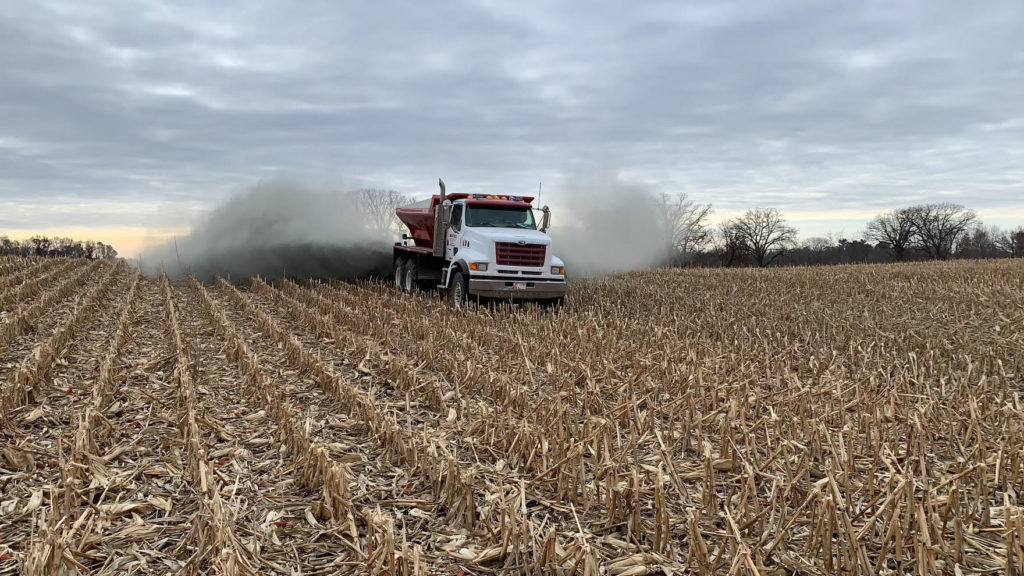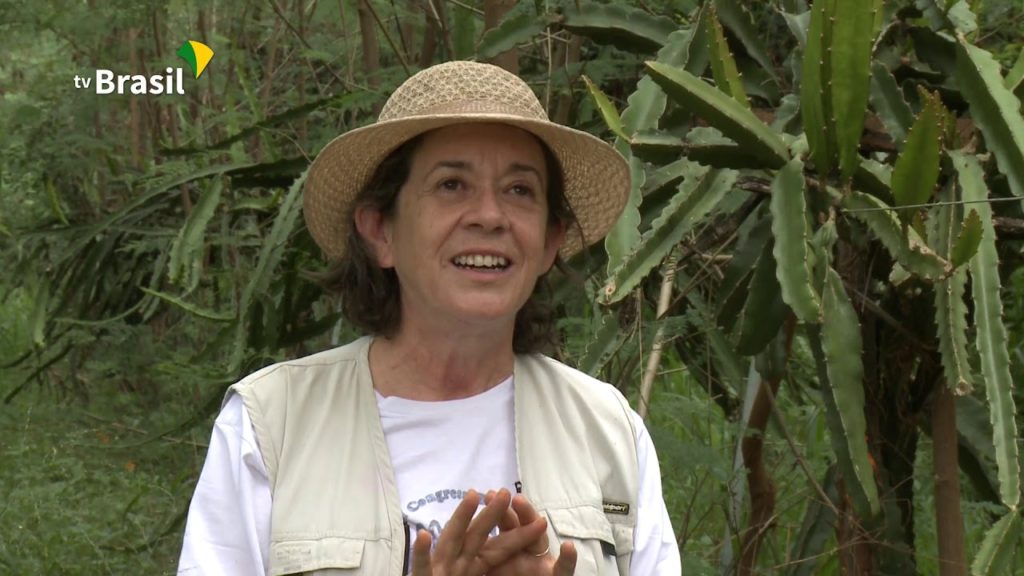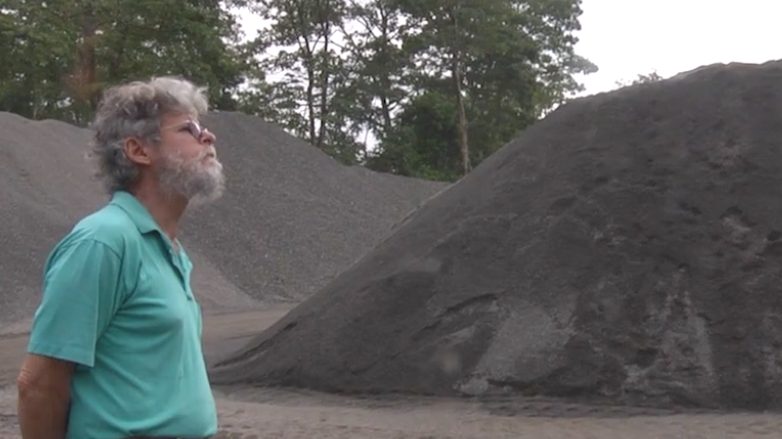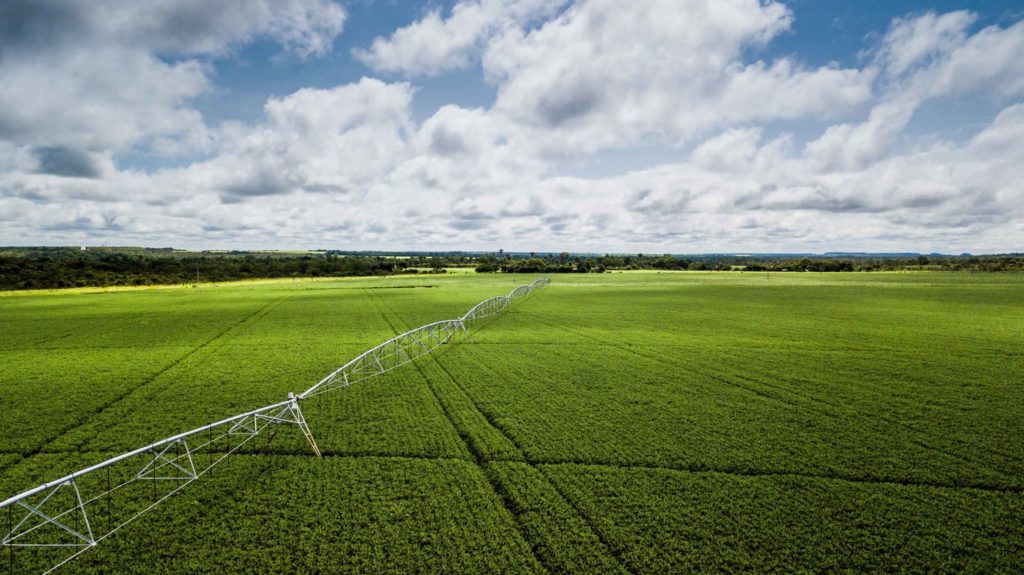Rock Dust to the Rescue for Brazil During Europe’s Geopolitical Crisis
A soy plantation in western Bahia, Brazil. Image by Fernanda Ligabue/Greenpeace.
As the invasion of Ukraine by Russia threatens to cut off fertilizer shipments, forcing Brazil to search for new fertilizer suppliers, further expansion of rock dust application in the South American country offers a solution, according to Remineralize the Earth executive director Joanna Campe.

“Rock dust is the cornerstone of a sustainable and profitable future,” Campe pointed out in response to the tragic circumstances. The geopolitical reality will encourage Brazil to look for alternative sources of innovative fertilizers that create energy independence while moving towards regenerative agricultural practices.
Brazil is highly committed to energy independence, and moving away from fossil fuel-based fertilizers toward their own resources will ensure both economic and sustainable agricultural systems that produce greater food security.
Campe highlighted that remineralization is an affordable and available alternative to conventional chemical fertilizers for Brazil, which is facing Russian export suspensions of conventional fertilizers as movements of such materials as potash and nitrogen have been impacted due to foreign shippers steering clear of the region in light of the war in Ukraine.
“As it stands, Brazil imports 85% of its fertilizers,” she said, adding that Brazil already is among the largest implementers of remineralization in the world, applying rock dust to upwards of five million hectares of land, which is equivalent to approximately eight per cent of the country’s total arable land. “Introducing remineralization at a larger scale has the potential to help Brazil insulate [its] fertilizer dependence from geopolitical shocks.”
Further, Campe noted, the Brazilian Agricultural Research Corporation (Embrapa), is actively engaged in researching rock dust and validating its application. Researchers have identified regions throughout Brazil that will stand to benefit most from applications of rock dust. The key difference between rock dust and conventional fertilizers is that rock dust is non-toxic and does not leach out into soils.
The agricultural issue
According to a recent WSJ article, ‘Ukraine War Hits Farmers as Russia Cuts Fertilizer Supplies’, Brazil is the world’s largest producer of coffee, soybeans and sugar, and it is the most dependent agricultural superpowers on imported fertilizer. If Brazilian farmers must pay significantly more for fertilizer or are unable to produce as many crops, then the cost of its agricultural products is likely to climb, driving up world food prices.

Russia, which accounts for about two-thirds of the world’s ammonium nitrate production, has halted exports (originally through April 1, but now extended until at least May 1) to guarantee supplies for farmers at home, the article adds, and the Brazilian National Fertilizer Association has warned that local fertilizer stocks will only last for another three months. Brazil’s government is launching a national fertilizer plan to stimulate investment in potash and phosphorus mines.
Another WSJ article, ‘Russian Ministry Recommends Suspending Fertilizer Exports’, suggests that fertilizer prices have already soared during the past year — something that can only be exacerbated if Russia suspends its exports and removes a large portion of global supply from the market.
Brazil’s sustainability aspirations
On March 11, the Brazilian government made official the creation of a National Fertilizer Plan, aimed at increasing the national production of fertilizers (and thus reducing its dependence on imports). The objective would be to reduce the country’s participation in imports to about 45 per cent by 2050.
To that end, introducing remineralization at a larger scale has the potential to help Brazil insulate its fertilizer dependence from geopolitical shocks, said Campe. “Rock dust is one of the most readily-available resources on the planet. Applying rock dust adds minerals and trace elements to improve depleted soils, making it a key component of sustainable and regenerative agriculture for increased yields and incomes in the future.”
Also, in March, the Brazilian government and the Inter-American Development Bank (IDB) announced that they would cooperate to make Brazilian agriculture more environmentally sound, boosting productivity on a sustainable basis, contributing to the protection of the environment, and improving the quality of agricultural support services.
The IDB opened a credit line of $1.2 billion for Brazilian projects to boost agriculture productivity and promote conservation and sustainable use of natural resources, as well as the development of biodiversity products and the sustainable development of agriculture.
Remineralization matters

In a Deutsche Welle article, ‘War Exposes Problems of Fertilizer Imported from Russia’, Suzi Huff Theodoro, a geologist and researcher at the University of Brasília, said chemical fertilizers are not essential. The remineralization specialist points to cheaper and more sustainable alternatives, such as bio-inputs.
Meanwhile, in a Universo Online article, ‘Magic Powder’, the researcher added that small and medium-sized mining firms can provide soil remineralizers from their current operations just by registering with the Ministry of Agriculture, Livestock and Supply (MAPA), which could help prevent environmental risks of new mining.
Rock dust fertilizer is rich in calcium, magnesium and especially potassium, which helps Brazil as its access to conventional fertilizers remains in question due to the Russia-Ukraine crisis, according to a g1 online article, ‘Rock Dust Can Serve as Fertilizer for Plants; Understand.’ The article suggests that the best product applied in the field comes from quarries of basalt, granite and mica schist, which are easily found in Brazil.
Supply-chain: Rock Dust to the Rescue
While Norwegian-based Yara International is not directly affected by sanctions against Russia, it is also dealing with the fall-out, according to a recent BBC online article. Trying to secure deliveries has become more difficult due to disruptions in the shipping industry. Nutrients are not the only factor, either. It takes large amounts of natural gas to produce ammonia, which is the key ingredient in nitrogen fertilizer, and Yara’s European plants rely on Russian gas.

Fortunately, according to Campe, rock dust is one of the most readily-available resources on the planet, making it a practical alternative to conventional fertilizers, as it can be more locally sourced and thus avoids many supply-chain issues. “Remineralization (enhanced weathering) utilizes finely ground rock dust and sea-based minerals to restore soils and forests, produce higher yields and more nutritious food, and store carbon in soils to stabilize the climate.”
She added: “Applying rock dust adds minerals and trace elements to improve depleted soils, making it a key component of sustainable and regenerative agriculture for increased yields and incomes in the future.”
Editor’s Note (11/5/24)
Readers have asked how rock dust provides nitrogen to degraded soils when it contains minimal to zero nitrogen, and have pointed out that soybeans are symbiotic with nitrogen-fixing bacteria. Tom Vanacore, an advisor to Remineralize the Earth, noted that applications of rock dust can increase biological diversity within native soils, especially in soils accustomed to heavy applications of synthetic nitrogen.
This increase in biological diversity, as a response to applications of freshly ground broad spectrum rock dusts such as the alkaline silicates, when coinciding with a reduction in applied nitrogen, may increase the indigenous and native populations of mineral solubilizing and free-nitrogen fixing microbiology as a consequence. In the same way calcium will increase the presence of rhizobia N-fixers on legumes, so do other microbial populations respond opportunistically to the appearance of freshly ground rock mineral powders and a dearth of applied nitrogen in the presence of growing plants.
By leveraging these responses, a new classification of biofertilizers is emerging called “biominerals” which combine reactive symbiotic biology, including free nitrogen-fixing and mineral solubilizing microbiology, on carbon and rock dust mineral substrates. This class of bio-fertilizers provides for opportunities for steep reductions in applied Nitrogen while reducing greenhouse gas emissions. Multiple modalities of benefit from soil remineralization may be achieved through Microbial Mediated Plant Nutrient Exchange including; mineralizing CO2 through the silicate to carbonate weathering effects, reductions in N2O volatilization through mineralization as well as a net reduction of applied synthetic fertilizer including life cycle N2O emissions through avoidance. These synergistic outcomes increase while remineralizing and restoring biological diversity to native soils.
Support us on Patreon
Thank you for joining us today! Please become a member of RTE and support us on Patreon. Unlike many larger organizations, we work with a team of determined and passionate volunteers to get our message out. We aim to continue to increase the awareness of remineralization to initiate projects across the globe that remineralize soils, grow nutrient dense food, regenerate our forests’ and stabilize the climate – with your help! If you can, please support us on a monthly basis from just $2, rest assured that you are making a big impact every single month in support of our mission. Thank you!








José Carlos de Oliveira
April 25, 2022 (12:51 pm)
Rock dust does not contaminate the environment, provides trace nutrients and is low cost.
Clayton Postma
October 28, 2022 (4:17 am)
Rock dust to the rescue. We are commercializing rock dust and carbon in South Africa to address high fertiliiser prices, food security and climate change.
David Price
November 1, 2024 (2:53 pm)
I notice that this article explains that Brazil is aiming to offset its needs for imports of Nitrogen (N) fertilizers but it does not explain how rock dust provides N to degraded soils. The fact is that rock dust contains minimal to zero N. However, what the article also does not explain is that soybeans are symbiotic with N-fixing bacteria (notably of the genus Rhizobium). I am guessing the point is that the rock dust creates an enhanced soil environment which makes it better suited to growing soybeans, and that regular crop rotation including soybeans can be used to boost the N content over time. Please confirm — and maybe update the article accordingly?
Joanna Campe
November 4, 2024 (9:42 am)
Hi David,
Thanks for your question. You are correct that rock dust does not provide nitrogen. I believe that the overall soil fertility that occurs as a result of using rock dust lessens the need for nitrogen as a separate single application.
I will have one of our current science writers or advisors take a look at your question and get back to you here.
Joanna at RTE
Joanna Campe
November 5, 2024 (9:39 am)
Hi David,
RTE advisor Tom Vanacore responded to your question. Please see the editor’s note at the end of the article.
Joanna at RTE